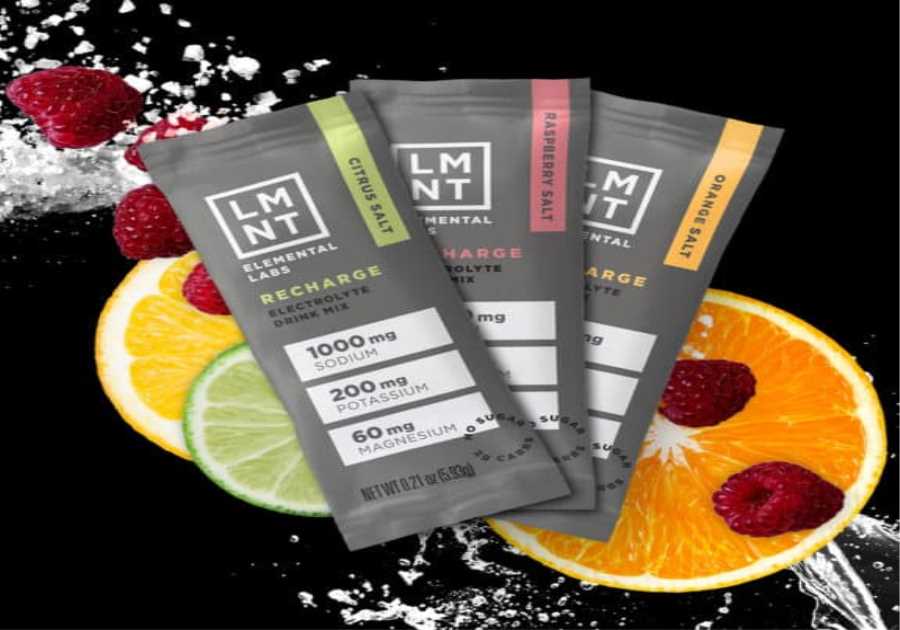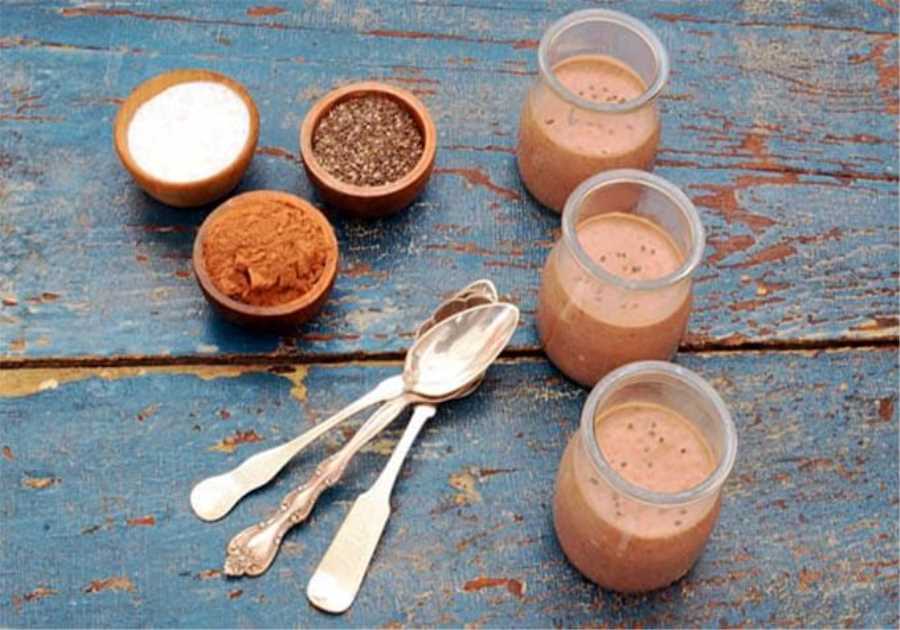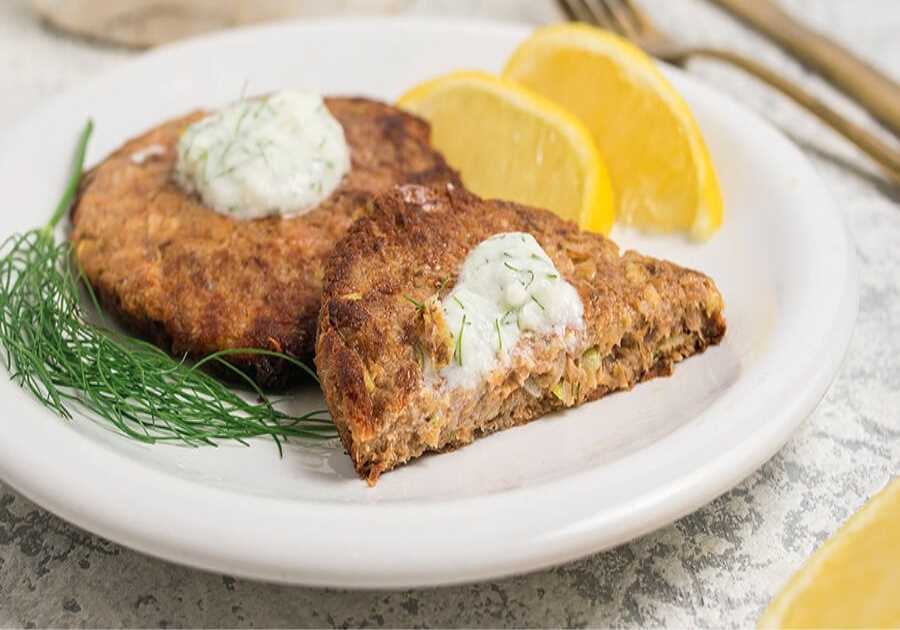The Paleo Diet is an eating philosophy based on the lifestyle of our hunter-gatherer ancestors from thousands of years ago. It's a way of life that promotes eating whole, nutritious foods such as fruits, vegetables, nuts, seeds, and proteins from lean meats and fish. This diet is free from grains, legumes, dairy products, refined and added sugars, salt, and starchy vegetables. Highly processed foods are also not allowed.
What Foods Should You Eat on the Paleo Diet?
When it comes to food choices on the Paleo Diet plan, you should emphasize fresh fruits and vegetables as part of a healthy balanced meal plan. Nuts and seeds provide healthy fats to your meals as well as eggs for a protein boost. Lean meats such as grass-fed animals or wild game are also recommended for their nutrient-dense profile with vitamins and minerals essential for health. Try adding omega-3-rich fish to your meal plans like salmon, mackerel, or albacore tuna along with healthy oils from nuts and fruits such as olive oil or walnut oil to round out your meal planning.
What Foods Should You Avoid on the Paleo Diet?
Any type of grain including wheat, oats, or barley has no place in the paleo diet plan so it's best to steer clear of these ingredients when preparing meals. Additionally, any type of legumes such as beans, lentils, or peanuts has been shown to be inflammatory by nature so they too need to be avoided while following this eating pattern. Dairy products - milk & cheese should also stay away from meals while following a paleo diet plan due to the maximum stress these can create in one's body if consumed regularly over time (refined & added sugars & salt included). Starchy vegetables like corn, jicama, peas, and white potatoes put extra strain on the digestive system which needs to rest in order for optimal health so those should be minimized if possible as part of this dietary pattern. Lastly, highly processed foods like chips or cookies should obviously also be avoided in order to maximize the benefits of paleo nutrition.
| Allowed Foods | Not Allowed Foods |
|---|---|
| Meat (preferably grass-fed, organic) | Grains (wheat, oats, barley, rice, etc.) |
| Fish and seafood | Legumes (beans, lentils, peanuts, etc.) |
| Eggs | Dairy products |
| Vegetables (excluding potatoes) | Refined sugar |
| Fruits | Processed foods |
| Nuts and seeds (excluding peanuts) | Vegetable oils (corn oil, soybean oil, canola oil, etc.) |
| Healthy fats (coconut oil, olive oil, avocado oil) | Artificial sweeteners |
| Herbs and spices | Alcohol |
Fruits
In the Paleolithic era, fruits and vegetables were a mainstay of the diet. The ancestors knew that these nutritious snacks would provide energy and sustenance when they were scarce.
Many of the fruits and vegetables available today may not be as nutritious as they once were. For example, the average American diet is high in saturated fats and low in polyunsaturated fats.
Aside from fruits and veggies, the paleo diet also includes nuts and seeds. These healthy foods are high in fiber, protein, and vitamins. They also offer anti-inflammatory benefits and are an important part of a paleo diet.
Starchy tubers
One of the most debated topics in the paleo diet is starchy tubers. Some proponents do not include them at all, while others consider them healthy, natural foods. Here's a look at some of the paleo-friendly options for starchy tubers.
Legumes are a large family of plants. Often referred to as peas, beans, and lentils, legumes contain protein, fiber, and iron. They can also be a source of phytochemicals, which may have antioxidant and anti-inflammatory properties.
While some proponents of the paleo diet do not eat nuts and seeds, they are considered healthy nutrition sources. Many varieties of fruit contain high concentrations of vitamin C, dietary fiber, and antioxidants. Fruits are also a good source of fructose, which can promote fullness. However, fruit should be consumed in moderation.
Processed sugars
We all know that processed sugars can do a number on our health. Whether we’re on a paleo diet or not, eating too much of these treats can be hazardous to our health. But why? What is it about processed sugars that make them so bad? Let’s take a deep dive into the science behind this phenomenon.
Processed Sugars contain simple carbohydrates, like glucose and fructose. These simple carbs contain little to no fiber and are quickly broken down during digestion, causing a surge in blood sugar levels which damages most of your organs over time. They also decrease your insulin sensitivity, leaving you with an empty feeling after each meal, raising cholesterol levels, and leading to chronic illnesses like diabetes and heart disease if not consumed in moderation.
On top of all this, when eating processed sugars while following a paleo diet there is a huge lack of essential macro-nutrients. Paleo foods provide almost everything the body needs for a healthy body and mind; however, most processed sugars contain very few macro-nutrients apart from calories (which does not make it a proper meal).
Skipping over some vital micronutrients such as vitamin B1 (also known as thiamine) may have detrimental effects that range from fatigue and depression to impaired metabolism caused by low-calorie intake or malnutrition from lacking vitamins & minerals – which could lead to long-term organ damage even if healed once detected early enough!
In other words: constantly snacking/eating sweets alone creates an imbalance in nutrients needed for proper cell functioning while decreasing one’s insulin sensitivity & raising blood sugar levels – two elements that increase risk factors linked to diabetes type 2 and heart disease.
So what should we do? Eliminating processed sugars entirely might be tough but substituting them with natural forms of sugar found in fruits & cinnamon can help reduce their amount consumed while maintaining good health habits - such as exercising regularly & finding creative ways to add proteins/proteolytic enzymes into meals instead of simply consuming higher amounts of carbohydrate sources like breads or cereals for example! In conclusion, we must understand why processed sugary foods are so bad for us and how they affect our bodies both short term through cravings& snacks as well as long-term illnesses if indulged too much so that we can make smarter dietary choices –especially when partaking of any kind of strict diet such as the paleo diet.
There are some paleo-friendly naturally derived sweeteners you may want to include in your diet as opposed to artificial sweeteners. These sweeteners can include honey, molasses, and maple syrup. However, be sure to only buy the best quality products.
Artificial sweeteners are not recommended for those with diabetes or a metabolic syndrome disorder. They can be dangerous to the liver, and they can cause weight gain.
Fish
Eating plenty of fish is a great way to stay true to this philosophy and also get essential vitamins and minerals.
Fish is high in omega-3 fatty acids, which may help reduce inflammation, lower blood pressure, and protect against heart disease.
Additionally, fish provides lean protein and is generally lower in fat compared to other sources of animal protein.
For these reasons, eating plenty of fish while on a paleo diet is recommended.
Eggs
Eggs are a staple on the Paleo diet. They are a great source of protein, vitamins, and minerals. In addition to their nutritional value, eggs are convenient, inexpensive, and versatile.
When following the paleo diet, avoiding processed foods is a good first step. Processed food often contains salt and sugar. A good paleo grocery list helps you avoid aisles and stick to your plan.
Nuts, seeds, and legumes are another great source of protein. These are high in fiber and contain healthy fats. Many varieties of fruit have antioxidants. Choosing a variety of fruits is important when following the paleo diet.
The paleo diet also allows for dark chocolate. This sweet treat is rich in calcium and protein. It can help fight off inflammation and lower blood pressure.
Frequently Asked Questions
Can you drink coffee on paleo?
Coffee can be consumed on a paleo diet. Although coffee's origin does not fit the lifestyle of a hunter-gatherer, it is still a source of antioxidants that can be added to a healthy paleo diet.
When coffee is consumed without sweeteners or dairy, it can be a great addition to any meal. This is great news since caffeine has many health benefits, including improved physical performance, mental alertness, and reduced risk of certain diseases like Parkinson's and type-2 diabetes.
Paleo-followers don't need to restrict coffee. Your daily cup of coffee can be enjoyed without sugar and with nut milk such as almond, cashew, or coconut milk. Have fun experimenting with different flavours from various regions around the world!
Coffee can be enjoyed in moderation and still adhere to the Primal eating plan. Get out there and explore all the tasty goodness that freshly brewed coffee offers!
What are the health benefits of Paleo?
Paleo has many potential health benefits. The Paleo diet focuses on whole foods, not processed. These include:
- Healthy digestion: Regular intake of nutrient-dense and fibre-rich food can improve digestion.
- Reduced inflammation: Refraining from processed and refined foods can help reduce inflammation.
- Balanced blood sugar levels: Eating low-glycemic index foods helps to stabilize blood sugar levels and reduce cravings for sugary snacks.
- You will have more energy: Eaten nutrient dense foods can help increase your energy levels.
- Paleo diets can improve mental clarity. They can also help focus and increase cognitive function.
- Paleo diets can be helpful in weight loss because they are low in calories.
- Better cardiovascular health: Eat lean proteins, healthy oils, and lots of fruits and veggies to lower your risk of developing heart disease.
- You can lower your chance of developing chronic diseases like diabetes, cancer and other autoimmune disorders by eating a nutritious diet.
What is the 85/15 rule of paleo?
Do you feel like your paleo diet isn't quite cutting it? It's not uncommon to feel this way. Many people are now accepting the 85/15 rule of paleo, which states that 85 percent of clean eating is acceptable if you're not in peak physical condition or have been competing in an important event.
It doesn't matter if you eat food that doesn't fit the paleo diet guidelines every now and again. The 15 percent accounted for unhealthy indulgence keeps it balanced and satisfying enough that you won't easily fall off track with your healthy lifestyle.
It's all too easy to get side-tracked when embarking on any diet accidentally - but this rule is here to help ensure those slip-ups are just that--slips--and not derailment from your fitness journey. It is for everyone, regardless of whether they are just starting their fitness journey or are already at the peak of their physical conditioning.
Although the 85/15 rule is not part of traditional paleo guidelines but it can be helpful as long as you keep your commitment throughout the week and eat mostly whole food ingredients.
Statistics
- As we learn more about the Paleolithic age, we discover that those who lived during it ate a plant-based diet, with merely an estimated 3%Trusted Source of their diet coming from animal-based foods. (medicalnewstoday.com)
- It's up to you to decide to what extent you want to follow those guidelines, but if you follow them 100%, you can be assured that you are eating the best food for your body and greatly investing in your long-term health and well-being. (paleoleap.com)
- (3) The paleo diet eliminates dairy because its advocates say many people are lactose intolerant and because eating dairy has been associated with Crohn's disease, among other claims, according to a popular paleo diet website. (everydayhealth.com)
- Plus, some of these foods — particularly beans — offer many compounds and are linked to positive health outcomes, such as a lower risk for metabolic disease, heart disease, and diabetes, according to a 2014 study. (everydayhealth.com)
- One study cited in the article, published in the European Journal of Clinical Nutrition, found that calcium intake levels among followers of the paleo diet were as low as 50 percent of the recommended daily value. (everydayhealth.com)
External Links
thepaleodiet.com
pubmed.ncbi.nlm.nih.gov
- PubMed: Scoping review of Paleolithic diet patterns: A definition proposal
- The health benefits and side effects of coffee consumption: A narrative review for nutritionists and dietitians - PubMed
ncbi.nlm.nih.gov
- PubMed: Regular consumption of a high-phytate Diet reduces the inhibitory effects of Phytate upon Nonheme iron absorption in women with low iron stores.
- PubMed
link.springer.com
- Influence of Paleolithic Diet on Anthrometric Markers in Chronic Diseases: A systematic Review and Meta-analysis – Nutrition Journal
- Popular Weight Loss Strategies: a Review of Four Weight Loss Techniques - Current Gastroenterology Reports
How To
How do I incorporate exercise into a paleo diet?
The key to optimal health is finding the right mix of exercise and nutrition. But wanting to achieve this balance can be difficult to maintain, especially when your diet is restrictive. It can be challenging to follow a paleo diet because it cuts out certain food groups, such as dairy and grains.
The good news? It is not difficult to incorporate exercise into your paleo lifestyle. Begin by thinking about how to maximize your movement during the day. It could mean walking for 10 minutes after dinner, standing up regularly if you're sitting for long periods of time.
Another option is high intensity interval training (HIIT), in which you alternate between intense activity, followed by brief rest breaks. This type of training takes only 20 minutes and doubles-up as strength training. It works all major muscle group quickly and efficiently. While HIIT exercises such squats or burpees are straightforward for beginners, the more advanced ones can be difficult for those who have been exercising for a while.
Finally, don't be afraid to mix things up with traditional endurance-type activities such as running, cycling, or swimming regularly. These activities can help burn calories and provide mental health benefits, such as stress relief and increased endorphin levels (talk about multitasking!). These are great options for incorporating exercise into your paleo diet, while also providing healthy food choices.






